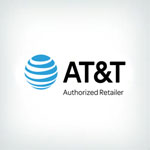Internet Security Essentials: Hardware, Passwords, and Encryption
Topics:
Cybersecurity We use the internet for almost everything. Internet companies are continually improving their internet speed, which makes streaming TV and movies even better.
We use the internet for almost everything. Internet companies are continually improving their internet speed, which makes streaming TV and movies even better.
The internet also makes paying bills and keeping current with friends’ and family’s life events convenient. However, the internet can pose risks, like hackers and data breaches.
Taking basic steps to secure your home internet can help protect your privacy.
Select up-to-date hardware
Hardware for internet use includes modems, routers, and ethernet cables. Wi-Fi is one of the most common ways to access the internet. Wi-Fi networks are created through a router. The router is where your home Wi-Fi network’s security starts.
Jason Glassberg, Co-Founder of Casaba Security, says, “Make sure your router is a good brand, and check the model to make sure it is still supported by the manufacturer. For example, D-Link no longer supports several routers it considers 'end of life,' and which now have serious security vulnerabilities. D-Link has even been sued by the FTC for shoddy security practices.”
Choosing a trusted brand can save you the headache of dealing with a security breach.
Todd Morris, CEO of BrickHouse Security, says “Use a modern router that gets firmware updates and security patches from the manufacturer. If it's more than three years old look into a new Wi-Fi router.”
These updates will ensure the consistent security of your internet. However, these updates are not usually automatic.
Holly Zink, a tech and online security expert for Safeguarde, says, “Often, but not always, router firmware updates need to be installed from the manufacturer’s website. These updates are essential to make sure your router is working properly and has no security flaws.”
“Check to see if the router needs to update its software or firmware, and be sure to check this regularly,” Glassberg adds.
Don’t use the default settings
When it comes to the default settings, laziness can lead to high security risks.
Doug Brennan, Digital Marketing Associate and manager of the Digital Addicts blog, says “One of the most important things you can do when securing your home’s Wi-Fi connection is changing the default login information on your router. This is something that not many of us do, but it leaves our Wi-Fi networks wide open to a variety of malicious attacks.”
The default information includes the Wi-Fi network name, IP address, and passwords. Unfortunately, this information is very easy to figure out.
Victor Congionti, who works at Proven Data, says “The default router name and password are often manufacturer generated and can be easily guessed by a digital thief.”
Fortunately, it’s fairly simple to change the default information.
Brennan says, “Simply open your favorite browser, enter your IP address into the address bar, and log in using your router’s default username/password (typically located on the bottom of your router). From here, navigate to your router’s settings and change both the username and password. Just remember to write down your new login information, in case you need to change any other settings in the future.”
Choosing names and passwords
When it comes to choosing a new password and Wi-Fi network name, there are a few important things to consider.
Glassberg recommends that passwords meet the following criteria:
- 10+ characters
- Upper and lower case letters
- Numbers
- Special symbols
Phillip Livingston, owner at SEO it, says “Don’t use common passwords, like birthdays, names, or even pets’ names. Use a password generator to make an arbitrary but secure password.”
Creating a complex password will help ensure your internet security. Changing it on a regular basis also provides an added measure of security. Be sure that you don’t reuse passwords.
When choosing a Wi-Fi network ID or Wi-Fi name, Glassberg says “Since the ID can be seen by anyone within range, or anyone scanning for local networks, it is a good idea to make this ID as generic and unassuming as possible so a nefarious person will have a harder time singling you out.”
Encryption
Encrypting your home internet means that all the data coming and going via your internet connection is coded to be unreadable. The only way for it to become readable is if someone breaks the code.
Austin Norby, software engineer at Blue Star Software, says “There are different levels of encryption for a home network. The first level of encryption is no encryption. The next level of encryption is using a protocol called Wired Equivalent Privacy (WEP). The only benefit of WEP is that your network traffic is not sent in the clear, otherwise, it's just as bad as no encryption.”
If your home internet isn’t encrypted, than anyone can see the data coming in and out. You’ll want to make sure you have a sufficient level of encryption for your internet.
Congionti recommends using the highest level of encryption. “Ensure that the wireless security settings are updated to the most current standards, which are a WPA2,” he says. WPA2 stands for Wi-Fi Protected Access 2.
Norby agrees, “The best and standard level of encryption to use for your home Wi-Fi is WPA/WPA2 with a Pre-Shared Key (PSK). WPA is the first version of this protocol and WPA2 is the second version of this protocol and should be used in all cases where available.”
The Top Internet Service Providers Companies



The Top Internet Service Providers Companies



Related Articles
Internet Service Providers
How to Tell If Your Phone Has Been Hacked
By Guest
March 19th, 2021
Internet Service Providers
3 Ways to Advertise Your Website on a Low Budget
By Guest
August 17th, 2020
Internet Service Providers
5 Tips for Creating a Positive Working Atmosphere to In...
By Guest
February 24th, 2020
Get Our Newsletter - Be in the Know
Sign up below to receive a monthly newsletter containing relevant news, resources and expert tips on Internet Service Providers and other products and services.
We promise not to spam you. Unsubscribe at any time. Privacy Policy